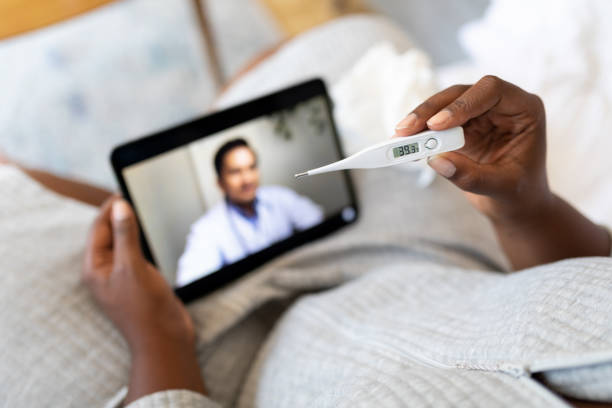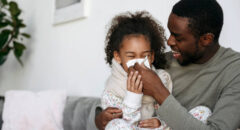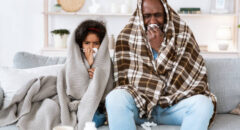
Results from more than 26,000 respiratory tests in late 2022 found simultaneous infections with COVID-19, influenza or respiratory syncytial virus (RSV) in more than one percent of positive tests.
Co-infections were especially widespread in children and teens. In people under age 21, researchers saw a six percent co-infection rate of SARS-CoV-2 and influenza A.
"With changing behaviors as the COVID pandemic began to recede, we felt it was important to investigate the resurgence of other respiratory viruses and potential incidents of co-infection, especially with the additional circulation of SARS-CoV-2," lead scientist George Pratt said in a news release from the American Association for Clinical Chemistry. He's technical director at Quest Diagnostics in Marlborough, Mass.
Co-infections tend to occur when there are multiple outbreaks of respiratory diseases. This can happen during flu season in winter.
Patients who have more than one simultaneous infection have a higher risk of severe disease and treatment complications, the researchers noted.
During an epidemic, co-infections can be especially problematic, such as in late 2022 when the U.S. spike in cases of RSV coincided with the ongoing spread of COVID-19 and the arrival of seasonal flu.
For this study, researchers gathered and analyzed more than 26,000 respiratory tests from a clinical laboratory, gathered during a 107-day period. These tests included 9,800 samples from pediatric patients.
The scientists tested the samples for RSV, COVID and influenza A/B.
"The most novel part of our research is the large sample size of results we had available as a part of co-testing in the Northeast," Pratt said. "Being able to look at over 26,000 test results was a great asset for our study."
They found that co-infections with two or more of the viruses occurred in 1.33% of positive results and in .55% of the studied samples. Positivity rates varied by the viruses involved, ranging from .38% in adults for both COVID and RSV to 2.28% in adults for both influenza A and COVID.
"As we experience more flu seasons and future epidemics of respiratory viruses, we'll be able to acquire more co-infection rate data," Pratt said.
"Our current work would make a useful data point to help evaluate whether future co-infection rates are shrinking or growing," he added.
Tips for minimizing the risk of co-infections
Protecting yourself from co-infections involves adopting a combination of preventive measures that are effective against various infectious agents. Here are some general strategies to help you minimize the risk of co-infections:
1. Practice Good Hygiene:
- Wash your hands frequently with soap and water for at least 20 seconds.
- Use hand sanitizer with at least 60% alcohol when soap and water are not available.
- Avoid touching your face, especially your eyes, nose, and mouth, with unwashed hands
2. Get Vaccinated:
- Stay up to date with recommended vaccinations, including those for COVID-19, flu (influenza), and any other relevant vaccines based on your health condition and age group.
3. Wear Masks:
- Wear a mask, especially in crowded or indoor settings, to reduce the transmission of respiratory droplets and particles that can carry various infections.
4. Practice Respiratory Etiquette:
- Cover your mouth and nose with a tissue or your elbow when you cough or sneeze. Dispose of tissues properly and wash your hands afterward.
5. Maintain Physical Distance:
- Keep a safe distance from individuals who are not from your household, especially in situations where maintaining distance is challenging.
6. Boost Immune System Health:
- Eat a balanced diet rich in fruits, vegetables, whole grains, lean proteins, and healthy fats.
- Stay hydrated, exercise regularly, and get enough sleep to support your immune system.
7. Avoid Close Contact with Sick Individuals:
- If you or someone close to you is feeling unwell, try to avoid close contact with others to prevent the spread of infections.
8. Disinfect Surfaces:
- Clean and disinfect frequently touched surfaces and objects, such as doorknobs, light switches, and cell phones.
9. Follow Public Health Guidelines:
- Stay informed about the latest guidelines and recommendations from reputable health organizations and government authorities.
10. Seek Medical Attention:
- If you're feeling unwell, especially with symptoms of a respiratory illness, consult a healthcare professional for proper diagnosis and treatment.
It's important to note that the specific measures you need to take can vary based on the prevalent infections in your region and your personal health status. Staying informed and following the guidance of health authorities is crucial to effectively protect yourself from co-infections.









